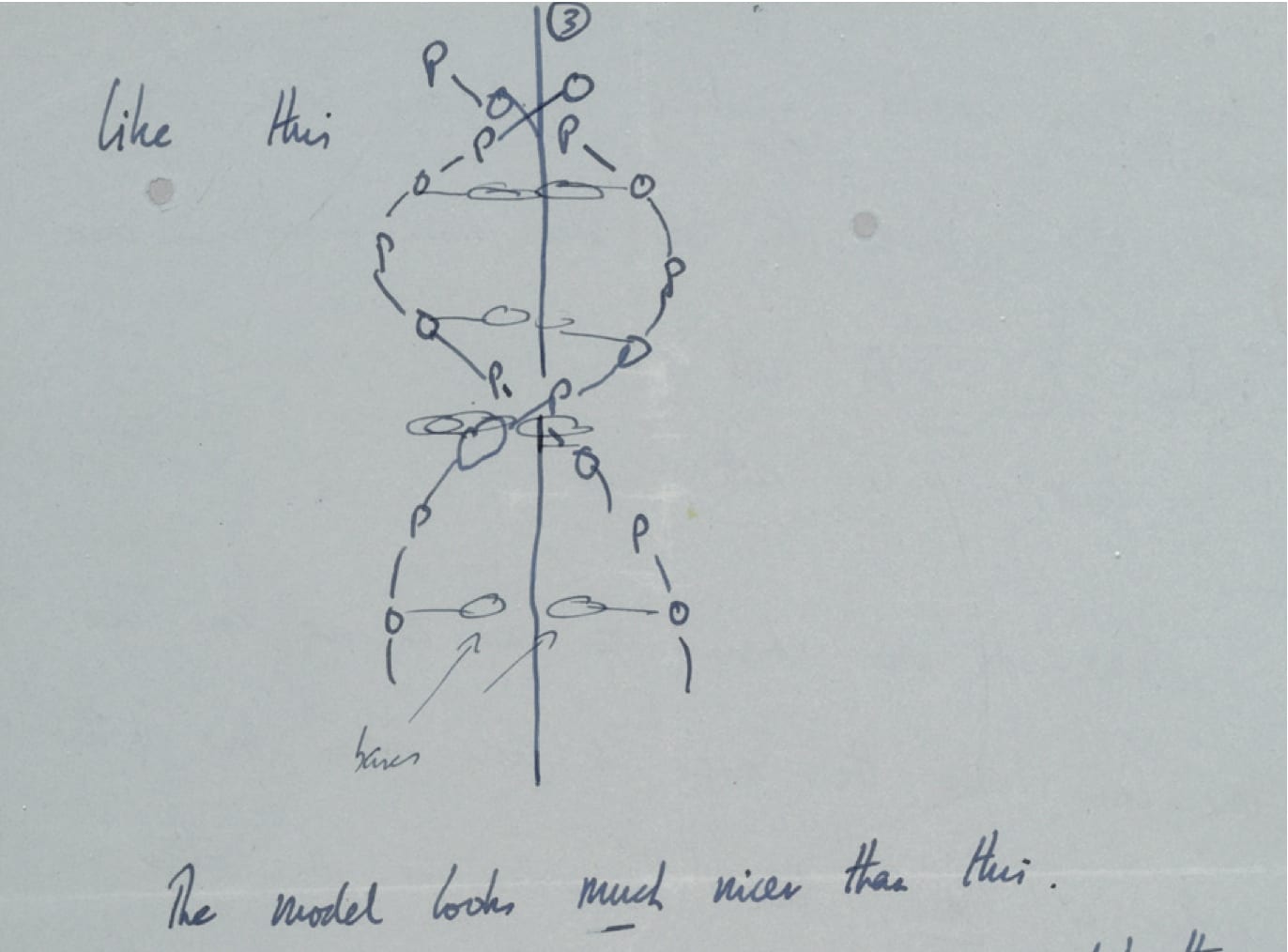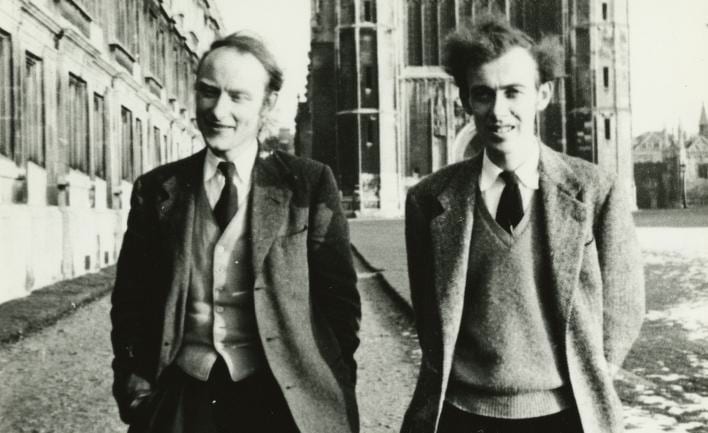
Last week the sale of some high-profile memorabilia attracted our attention, and no, we’re not talking about the $2.1M price tag for a Honus Wagner baseball card.
It was the sale of two sets of items once owned by Francis Crick, who with James Watson discovered the structure of DNA back in 1953.
Auctioneers sold off Crick’s Nobel prize – along with a few other items like his lab coat and a sailing journal – last Thursday for about $2 million. But also auctioned off last week was a handwritten letter Crick sent to his then 12 year-old son describing his and Watson’s discovery and the DNA model of the double helix structure they created.
 Crick and Watson
Crick and Watson
It’s the letter – grabbed by an anonymous bidder for $6 million – that attracted the attention of many of us here.
In March of 1953 just before Crick and Watson had their findings published in Nature, Crick sent off this simple note to his son.
By now the double helix is so iconic that we forget how brilliant it is in its simplicity. As Crick said in the letter to his son, the “structure is very beautiful.”
His letter accomplishes the difficult task of explaining this scientific breakthrough in terms that even a 12 year-old could understand. In describing the quality of DNA that allows our cells to divide and make copies of themselves, he wrote:
“It is like a code. If you are given one set of letters you can write down the others.”
He went on, “Now we believe that the DNA is a code. That is, the order of the bases (the letters) makes a gene different from another gene (just as one page of print is different from another.) You can now see how Nature makes copies of the genes. Because if the two chains unwind into two separate chains, and if each chain then makes another chain come together on it, then because A always goes with T, and G with C, we shall get two copies where we had one before.”